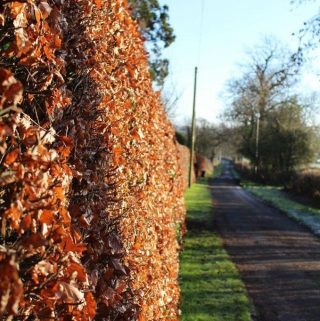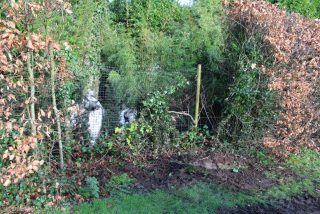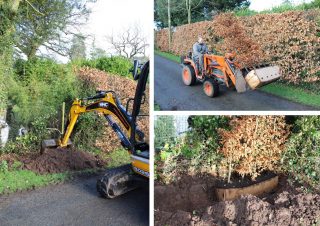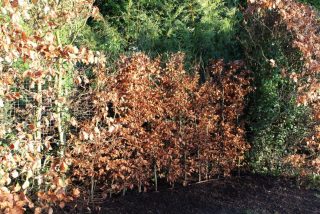Bridging the Gap
Hedges can often be overlooked in a garden as simply a boundary
separating one space from another. However, they serve many important
functions and can be very beautiful, from flowers and berries to lush
green emerging foliage or golden autumn colour. The benefits of hedges
for wildlife are well-documented such as providing nesting places for
birds or habitat for hedgehogs to pass through but a mixed hedge with
different fruits and flowers can provide nectar for pollinating insects
and winter food for birds. Recent research has also revealed the benefit
of hedges for blocking out noise, capturing particulate pollution and
reducing the risk of flash flooding by intercepting rainfall.

We have many different hedges here at Morton Hall from evergreen
hedges of Portuguese Laurel (Prunus lusitanica) and Yew (Taxus baccata)
to deciduous hedges of Hornbeam (Carpinus betulus) and Beech (Fagus
sylvatica). However, the largest and oldest hedge in the garden is the
one running along Morton Hall lane made up of Beech on the outside and
Yew on the inside. This hedge has separated the garden from the lane
since Edwardian times but, sadly, a section of the hedge inexplicably
died last summer and needed to be replaced.

Hedging is best planted from late autumn to spring and can be brought in a variety of different specifications from bare root whips to root balled and potted plants. We chose to plant the Yew as 1.2m tall root balled plants at equal distances in a trench dug by hand. To aid establishment we removed the hessian around the root ball before planting and added mycorrhizal fungi to the planting hole before firming the plants in and mulching. When planting and mulching woody plants such as hedging plants, one must plant at the correct depth as planting too low in the ground and covering with mulch can cause the base of the stem to rot and the plant to die.
The section of Beech hedge was replaced by larger 2m tall ‘instant
hedging’ units. These were selected to provide an immediate screen from
the road and were supplied in 1m long cardboard boxes. Again, a trench
was dug but this time with a mini digger, and we chose to remove the
cardboard from around the plants before placing them out in the trench.

The new Beech hedge was also mulched after planting and a section of
perforated hose was laid through both new sections of hedging so that,
during this coming summer, it can be kept easily watered in dry weather.
We will keep a watchful eye on this new hedge so that it hopefully
establishes well and is there to mark the boundary of Morton Hall for
another 100 years!

